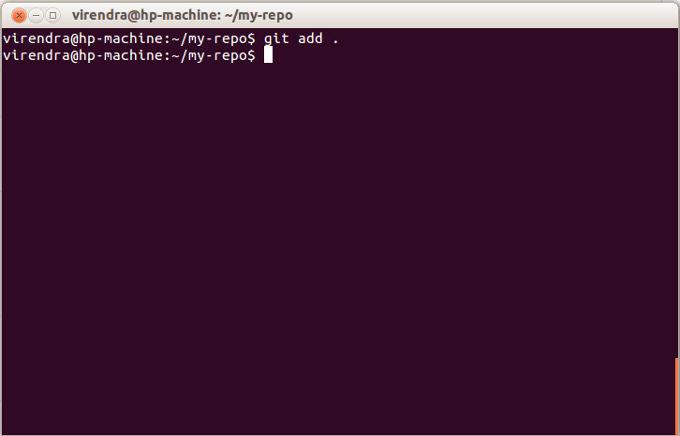

Learn all about Git in the latest blog from Summer Worsley. Tracking these changes can also help other teammates come up with a better solution.
#Git add remote and init code
The diagram below shows how changes to data or code affect the metadata and output of the model. Track data science experiments help scientists revert accidental changes, select the best experiment based on the performance metric, and collaborate with other teammates. All of these are necessary for monitoring the progress of AI applications and resolving issues. The metadata includes files containing meta-information about the machine learning model, features, model parameters, and automation files.

In a typical data science project, you have a Jupyter notebook, dataset, model, metadata, and model metrics. By using Git extension git-lfs, you can store and version a large database and machine learning models. Git provides version control for scripts, metrics, data, and models.
#Git add remote and init Offline
This approach allows developers to work offline and commit changes. There are multiple backups for the same project.

Once the task is finished, you can merge new features with the main version (master branch). Each developer has his/her task, and by using branches, they can work on the new feature without the interference of other teammates. This feature promotes conflict-free teamwork. To save the changes made, merge the branch into the main version. The branches are copies of the source code that works parallel to the main version. The commits are identified by a unique hash which is used to compare and revert the changes made.Ī graph of the development history Branches It allows us to revert back to the previous commit, compare changes, and view the progress of the development project - Azure DevOps. These commits are linked with each other, forming a development history graph, as shown below. Whenever you save changes you have made, Git creates a commit. Git stores your files and their development history in a local repository. Due to its flexibility and popularity, Git has become an industry standard as it supports almost all development environments, command-line tools, and operating systems. It allows you to sync changes with a remote server. It enables developers and data scientists to track code, merge changes and revert to older versions - AWS. Anyway, you should take into consideration the fact that working with submodules is quite tricky, and you can’t use them for all your projects.Git is a distributed, open-source version control system. Generally, if you want to keep your projects in different repositories, using submodules is the right decision. The second command will fetch the overall data from the submodule project, checking out the mapped commit in the parent project. git/config file along with the mapping from the. You need to run git submodule init and git submodule update. Note that it won’t clone the files within them. With the help of this command, you can clone the directories with their submodules. You can proceed by using the git clone command. Cloning git submodulesĪnother common action for git submodules is cloning a project with submodules. If you want the principal repository to point at the new commit, you need to invoke the git add command, commit, and finally push it. It will check out the code of the submodule on another commit, not the one that your main repository is pointing at. If you invoke the git status command in your principal repository, the submodule will be in the “Changes not staged for commit” with the following text: “modified content. Git pull -recurse-submodules Pushing updates in git submoduleĪs the submodule represents a separate repository, it allows running the git push command in the directory of the submodule.


 0 kommentar(er)
0 kommentar(er)
